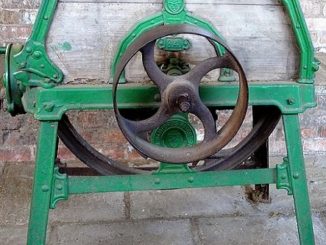Introduction
Animal nutrition deals with the nutritional needs of food-producing, companion, or service animals. It is the science of preparation or formulation of feed for animals that produce food (e.g., meat, milk) or non-food materials (e.g., wool). Animal nutrition also is an integrative science, as it deals with the different steps by which the animal assimilates feed, or food, and uses it for its growth, health, and performance (e.g., meat, milk, and egg production and service).
Why Perform Nutrient Analysis of Feedstuffs?
Animal nutrition is the science of feed preparation (formulation) and feeding to meet the needs of animals at different phases of growth, or life stages. Therefore, nutritionists need to know the nutrient components of the feed or the raw materials used in ration formulation. Nutrient analysis serves as a system to analyse the feed and the needs of the animal, enabling producers to optimize nutrient utilization in feed and helping researchers relate to animal performance, tackle issues of underperformance, and reduce food production costs.
Most forage and by-product feeds are variable in composition. Only very few, such as dried whole whey, are uniform in composition and do not usually require analysis (Schingoethe, 1991).
Feed analysis provides information for:
- farmers to optimize nutrient utilization in animal feeds;
- feed compounders to prepare feed mixtures suitable for different animal production systems;
- researchers to relate animal performance to feed characteristics; and
- plant breeders to optimize the nutritive value of new varieties (Madsen et al. 1997; Wrigley, 1999).
Analysis of Vitamins in Animal Nutrition
For the analysis of Vitamins present in the feed stuffs or veterinary feed premixes, High Performance Liquid Chromatography (HPLC) technique is highly preferred and also commonly used.
Principle of High-Performance Liquid Chromatography (HPLC)
The process involves the interaction of the compounds in the analyte or the sample across the immobile surface (stationary phase).
The compounds bind at specific regions of stationary phase based on certain physical and chemical properties. These bound molecules are then eluted with a suitable buffer and same are collected with time.
Instrumentation
The Pump
-
- The development of HPLC led to the development of the pump system.
- The pump is positioned in the most upper stream of the liquid chromatography system and generates a flow of eluent from the solvent reservoir into the system.
- High-pressure generation is a “standard” requirement of pumps besides which, it should also to be able to provide a consistent pressure at any condition and a controllable and reproducible flow rate.
- Most pumps used in current LC systems generate the flow by back-and-forth motion of a motor-driven piston (reciprocating pumps). Because of this piston motion, it produces “pulses”.
Injector
-
- An injector is placed next to the pump.
- The simplest method is to use a syringe, and the sample is introduced to the flow of eluent.
- The most widely used injection method is based on sampling loops.
- The use of the autosampler (auto-injector) system is also widely used that allows repeated injections in a set scheduled-timing.
Column
-
- The separation is performed inside the column.
- The recent columns are often prepared in a stainless-steel housing, instead of glass columns.
- The packing material generally used is silica or polymer gels compared to calcium carbonate.
The eluent used for LC varies from acidic to basic solvents. - Most column housing is made of stainless steel since stainless is tolerant towards a large variety of solvents.
Detector
-
- Separation of analytes is performed inside the column, whereas a detector is used to observe the obtained separation.
- The composition of the eluent is consistent when no analyte is present. While the presence of analyte changes the composition of the eluent. What detector does is to measure these differences.
- This difference is monitored as a form of an electronic signal. There are different types of detectors available.
Recorder
-
- The change in eluent detected by a detector is in the form of an electronic signal, and thus it is still not visible to our eyes.
- In older days, the pen (paper)-chart recorder was popularly used. Nowadays, a computer-based data processor (integrator) is more common.
- There are various types of data processors; from a simple system consisting of the in-built printer and word processor while those with software that are specifically designed for an LC system which not only data acquisition but features like peak-fitting, baseline correction, automatic concentration calculation, molecular weight determination, etc.
Degasser
The eluent used for LC analysis may contain gases such as oxygen that are non-visible to our eyes.
-
- When gas is present in the eluent, this is detected as noise and causes an unstable baseline.
- Degasser uses special polymer membrane tubing to remove gases.
- The numerous very small pores on the surface of the polymer tube allow the air to go through while preventing any liquid to go through the pore.
Column Heater
The LC separation is often largely influenced by the column temperature.
-
- In order to obtain repeatable results, it is important to keep consistent temperature conditions.
- Also, for some analysis, such as sugar and organic acid, better resolutions can be obtained at elevated temperatures (50 to 80°C).
- Thus, columns are generally kept inside the column oven (column heater).
Types of HPLC
-
- Normal phase: Column packing is polar (e.g silica) and the mobile phase is non-polar. It is used for water-sensitive compounds, geometric isomers, cis-trans isomers, and chiral compounds.
-
- Reverse phase: The column packing is non-polar (e.g C18), the mobile phase is water+ miscible solvent (e.g methanol). It can be used for polar, non-polar, ionizable, and ionic samples.
-
- Ion exchange: Column packing contains ionic groups, and the mobile phase is buffer. It is used to separate anions and cations.
-
- Size exclusion: Molecules diffuse into pores of a porous medium and are separated according to their relative size to the pore size. Large molecules elute first and smaller molecules elute later.
Advantages of HPLC
-
- Speed
- Efficiency
- Accuracy
- Versatile and extremely precise when it comes to identifying and quantifying chemical components
Analysis of minerals in Animal Nutrition
Minerals are essential elements in animal nutrition as they fulfill multiple functions in the physiology of all systems.
In ruminants, minerals are obtained through forages and feed. The number of minerals present in these forages is variable, so they should be supplemented according to this mineral composition. The type of pasture and soil change the composition of minerals supplied in the diet.
In poultry and swine, minerals are mainly obtained in the feed as it constitutes their main source of food. This feed must be of high quality to ensure a correct balance of proteins, fats, carbohydrates, and minerals. In addition, salts are available to supplement the diet to ensure that poultry and swine ingest the recommended amounts of minerals.
Currently available methods include the following: atomic absorption spectrometry, atomic emission spectrometry, mass spectrometry, neutron activation analysis, x-ray emission spectrometry, molecular light absorption spectrometry, molecular fluorometry, electrochemistry, Kjeldahl method (nitrogen), combustion elemental analysis, volumetry, ion chromatography, and gravimetry.
The principal techniques described are:
- Atomic Absorption Spectrometry (AAS), in which the amount of radiation absorbed by the ground state atoms in a flame or in small electrical oven (graphite furnance) is measured.
- Atomic Emission Spectrometry (AES), in which atoms are excited in a flame, electrical arc, spark, inductively coupled plasma, and the radiation intensity emitted by a fraction of excited atoms that return to their ground state is measured.
1. Atomic Absorption Spectroscopy (AAS)
It is an analytical method that is based on the absorption of UV-visible radiation by free atoms in the gaseous state.
-
- The feed sample to be analyzed is normally ashed and then dissolved in an aqueous solution.
- This solution is placed in the instrument where it is heated to vaporize and atomize the minerals.
A beam of radiation is passed through the atomized sample, and the absorption of radiation is measured at specific wavelengths corresponding to the mineral of interest. Information about the type and concentration of minerals present is obtained by measuring the location and intensity of the peaks in the absorption spectra.
Principle of AAS
When a sample containing copper (Cu) and nickel (Ni), for example, is exposed to light at the characteristic wavelength of Cu, then only the Cu atoms or ions will absorb this light. The amount of light absorbed at this wavelength is directly proportional to the concentration of the absorbing ions or atoms.
The electrons within an atom exist at various energy levels. When the atom is exposed to its own unique wavelength, it can absorb the energy (photons) and electrons move from a ground state to excited states. The radiant energy absorbed by the electrons is directly related to the transition that occurs during this process. Furthermore, since the electronic structure of every element is unique, the radiation absorbed represents a unique property of each individual element and it can be measured.
Main steps in AAS are:
-
- Aspiration of sample into the flame (graphite furnance)
- Conversion of the samples into free atoms and the gaseous atomic state formation (atomic cloud)
- Absorption of the monochromatic radiation by the ground state atoms from the atomic cloud
- Measurement of the transmitted radiation energy
- Extraction of the quantitative information from the registered signal
The monochromatic light is given off by hollow cathode lamp (HCL), the cathode made from the same element as that being determined. Therefore, the wavelengths of radiation given off by the source are the same as those absorbed by the atoms in the flame.
2. Atomic Emission Spectrometry (AES)
Atomic emission spectroscopy (AES) is a method of chemical analysis of samples by the electronic transition of atoms by using flame and argon plasma sources. The source of excitation influences the intensity of emission in such measurement. The source provides sufficient energy to vaporize the sample. It also causes the electronic excitation of gaseous elementary particles. Therefore, we get band and line spectra.
Measurement in atomic emission spectroscopy is feasible because the spectral line has a definite wavelength. Recently, we used inductively coupled plasma atomic emission spectroscopy for the analysis of samples.
Inductively Coupled Plasma (ICP)
Inductively coupled plasma contains a remarkable fraction of electrons and positive ions. It can conduct electricity and affected by magnetic fields. They are composed of highly energetic and ionized gases produced from noble gases like argon. They are useful not only for the dissociation of atoms but also for excitation and ionization to give atomic and ionic emission spectra. Argon-supported inductive coupled plasma (ICP) is most common for using atomic emission spectroscopy.
- The traces of metals like calcium (Ca), copper (Cu), iron (Fe), manganese (Mn), magnesium (Mg), phosphorus (P), potassium (K), and zinc (Zn) from beer or wine can be analyzed by inductively coupled plasma atomic emission spectroscopy.
Neutron Activation Analysis (NAA)
One of the techniques used to accurately determine the concentrations of elements in a sample is the Neutron Activation Analysis (NAA). This process requires the use of a nuclear reactor to irradiate the sample.
Steps of NAA
- Obtain the plant and wash to remove the contaminants.
- Dehydrate the sample with the help of heat or freeze dry.
- A lyophilizer is frequently used for the freeze-dry method.
- The dehydrated sample is then prepared for testing. A small amount of dehydrated plant material is removed from this bag. A portion of the dried plant material is ground into a powder using a mortar and pestle.
Sterile technique is required to avoid cross c
Specialized software analyzes radiation peaks. Peak data is correlated to specific elements for identification and quantification.
Conclusion
Analysis of the various Vitamins and Minerals is a vital part in Animal Nutrition. The various advanced techniques have come as a boon to this field, making the analysis easier and more precise in comparison to the age-old traditional methods used.
The HPLC technique benefits the feed industry in estimation of the vitamins and other components like feed additives, preservatives or micro toxins present in the feedstuffs. The AAS, AES and the NAA techniques are used for the analysis and estimation of various trace minerals present in the feed stuffs which help the researchers, farmers and scientists in this feed industry to bring improvement. Although these analytical techniques are costly and needs proper trained personnel to operate but has the advantage of giving specific and precise results.






Be the first to comment